If you know anything about the United States’ spectacularly f*cked up and viciously racist prison system then you’ve possibly wondered, from time to time, how one might go about “changing things” when activism involving alleged criminals has historically been too stigmatized to gather significant mainstream attention.
Well, two weeks ago with the final shuttering of the notorious Tamms Correctional Center in Illinois, there is a new hope on the horizon that activism and publicity can actually make a difference. Tamms, a 500-bed supermax facility, keeps its inmates in solitary confinement, where they spend 23 hours a day in 7-by-12-foot cells. There’s no mess hall, library, classroom or yard at Tamms.
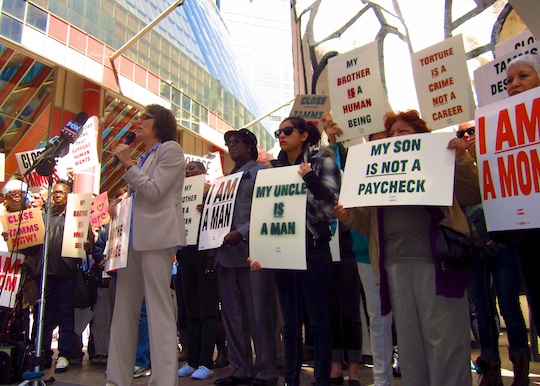
Laurie Jo Reynolds addresses the mental health damage caused by long-term isolation at an I AM A MOM demonstration held by Tamms Year Ten, James R. Thompson Center followed by march to AFSCME headquarters, Chicago, April 4, 2012. // A. Jabari Jefferson/MEDILL
But, although the conditions at Tamms are particularly horrifying, it’s only one of many American Supermaxes employing the controversial “solitary confinement” technique that many (including The United Nations International Covenant on Civil and Political Rights) consider a violation of the Eighth Amendment, which forbids “cruel and unusual punishment.”
Solitary confinement actually started out as a nice, well-intentioned Quaker thing — they thought isolation would give criminals a chance to contemplate what they’d done and do some spiritual soul-searching, as Quakers are wont to do. But throughout the 19th century, reports of the mental health problems sustained in solitary discouraged the strategy from becoming popular or common.
The road to our current Supermax Prison boom began in 1983 when two corrections officers were stabbed to death by inmates in two different incidents at a high-security prison in Marion, Illinois. The facility responded by going into “permanent lockdown,” from which they began transforming the place into a “control unit” prison. (According to at least one inmate kept in the Marion prison at that time, inmates were abused and essentially tortured throughout this process.)
In response to a call for more secure prisons from Norman Carlson, then-director of the Federal Bureau of Prisons, “ADX Florence” was constructed in Florence, Colorado, and met Carlson’s recommendation to isolate inmates who “show absolutely no concern for human life” from correction officers and other prisoners. By 2005, 44 US states had built their own wildly expensive Supermaxes, prisons made specifically to house “violent or disruptive inmates” in isolation. Many inmates from the Marion prison were transferred to the Supermax, The Tamms Correctional Center.
2005 was also the last time the government took a full-scale count of inmates in solitary, from which they determined that approximately 80,000 inmates were being held in isolated confinement in the United States on any given day (follow that link for more discourse around the origin and meaning of that number). At least 25,000 inmates are kept in solitary in high security Supermaxes. Sometimes inmates under the age of 18 are held in solitary confinement, which is possibly the worst idea of all time. Many are kept there for months or years or even decades — Pelican Bay’s currently got an inmate on his 43rd year. Inmates are often deprived of educational or therapeutic programs, reading materials, sunlight, noise, human contact and communal religious services. Their one hour outside of their cell is spent in a confined outdoor “exercise” space void of other human beings.
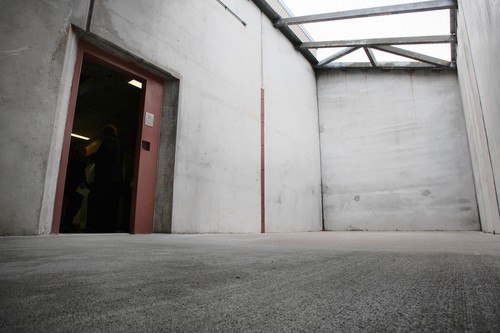
Concrete Exercise Yard ( Tribune photo by John Smierciak / February 13, 2009 )
Although Tamms is an all-male facility, it’s crucial to note that women in solitary confinement face special challenges. “Solitary confinement makes women more vulnerable to staff sexual assault since no one can see what is happening,” says author Victoria Law in an interview in PM Magazine. “Women are punished for behaviors that violate gender norms, behaviors such as spitting or cursing or not following orders, behaviors that men are not punished for. This is also why women are sent to segregation when they report sexual misconduct or engage in sexual activity; they’re violating what we, as a society, see as ‘good girl behavior.'”
As psychiatrist Stuart Grassian pointed out in a 2007 TIME Magazine article about the mental health risks of solitary confinement: “We’re taking criminals who are already unstable and driving them crazy.” Psychology professor Craig Haney studied the SHU population of Pelican Bay in California and says that “there hasn’t been a single study of individual solitary confinement that didn’t show negative psychiatric symptoms after ten days.” If an inmate is ever released from solitary into the world, they face a severe uphill battle that’s more likely to lead into a deep gully of despair, with a destructive impact on their friends, family and community, than it is towards any semblance of a new life. In other words: “solitary confinement has a detrimental effect on inmates’ psyches and is likely to make them more aggressive, uncontrollable and, upon release from prison, more likely to reoffend and be reincarcerated.”
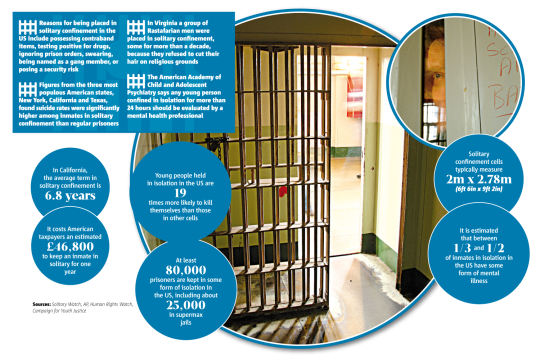
(click to enlarge) (via metro.co.uk)

(click to enlarge) via http://carrington.edu/blog/programs/criminal-justice/anatomy-of-a-supermax-prison/
Many Americans still assess solitary by its most well-known inmates — ADX Florence houses heaps of Al-Qaeda operatives as well as famed Al-Qaeda conspirator Zacarias Moussaoui, Ted Kaczynski (“The Unabomber”) and Oklahoma City bomber Terry Nichols as well as members of prominent gangs, drug cartels, cults, The Ayryan Brotherhood and Neo-Nazi groups.
But even for those people out there who believe solitary is a reasonable punishment for those crimes and many other severe felonies, it’d be impossible for them to justify why we’re also sending non-violent offenders and alleged criminals into solitary for profoundly ridiculous reasons, such as inmates in Pelican Bay kept in solitary because prison staff believes — with proof that’s shaky at best and entirely fabricated at worst — that said inmate is in a prison gang. “Proof” has included possessing a picture of Malcom X or a copy of Machiavelli’s The Prince. Solitary Watch reports that these days, inmates are placed in solitary for things like possessing contraband, testing positive for drug use, ignoring orders, or using profanity, as well as because they’re gay, transgender, Muslim, have a mental illness or report rape or abuse by prison officials. David Tulam, whose case is not unusual, spent 18 years in solitary in New Jersey State Prison — the crime that landed him in prison in the first place was “trying to rob a gun store,” Tulam got tossed into solitary for allegedly plotting to harm a prison officer.
In the American Friends Service Committee’s 2003 Report “The Prison Inside The Prison: Control units, Supermax Prisons, and Devices of Torture,” it is noted that according to independent monitoring organizations like Human Rights Watch and accounts received by AFSC, “the decision to isolate the prisoner may be made without any formal proceeding, and the period of isolation most often has no defined endpoint… because confinement in a control unit is determined by prison authorities rather than the courts, prisoners’ constitutional right to due process of law is not recognized.”
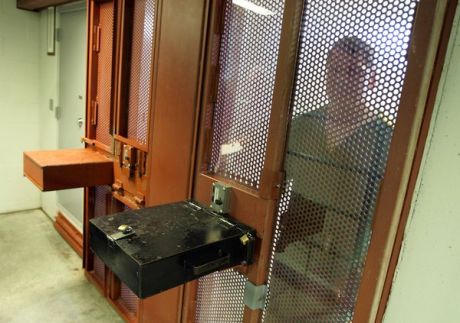
“An inmate looks out from his cell at the Tamms Correctional Center in 2009.” ( Chicago Tribune / February 13, 2009 )
Many wrongfully accused and wrongfully imprisoned innocent people have been held in solitary. For example:
Damien Echols of the “West Memphis Three” was recently released after spending 10 years in solitary in an Arkansas Supermax for a murder he didn’t commit.
Julie Rea was wrongfully imprisoned on the charge of murdering her son and spent 3 years in solitary before her exoneration in 2006.
Herman Atkins spent 11 years in prison, including 16 months in solitary confinement, for a rape and robbery he didn’t commit before his exoneration in 2000.
Robert Dewey spent 17 years in prison for a murder he didn’t commit, during which he was sent to solitary for failing a drug test — he’d been given Tylenol 3 following a back surgery, which officers assured him wouldn’t show up on the test (it did).
Nicholas James Yarris spent 23 years in solitary confinement on murder, rape and abduction charges, before his exoneration by DNA testing in 2003.
Darrell Cannon was tortured by the cops who picked him up on a murder he didn’t commit in 1983. Chicago Police Commander Jon Burge, linked to other incidents of torture, as in charge. Cannon spent 24 years wrongfully imprisoned, including 9 years in solitary confinement in Tamms.
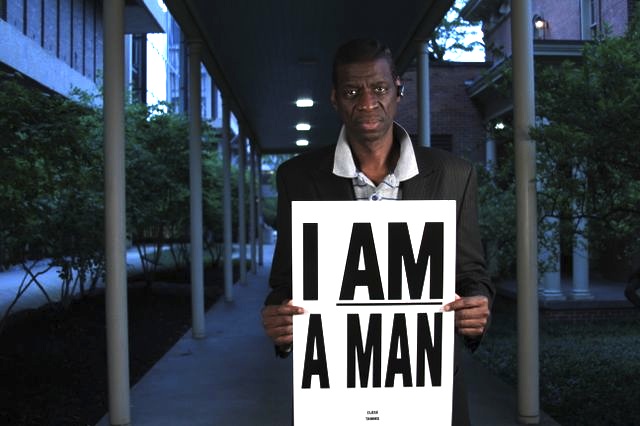
Darrell Cannon // Jane Addams Hull House, Chicago, May 6, 2012 // Photo: School of the Art Institute of Chicago // Tamms Year Ten
Poor people are often unable to secure the legal representation and other resources they need to avoid a wrongful conviction or a sensical sentence. People of color face a labyrinth of institutionalized discrimination regardless of the legal counsel they secure. Racism is a controlling force behind every movement and decision in the criminal justice system, from arrest to conviction and beyond, leading to dramatically higher incarceration rates and harsher sentences for people of color than white people committing the same crimes. Though precise numbers on the racial makeup of solitary confinement inmates aren’t available, it’s safe to assume that like other extreme punishments, solitary confinement is disproportionally doled out to people of color.
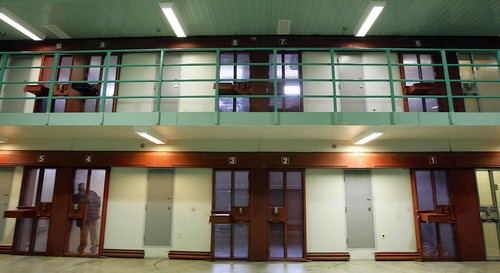
inside tamms (Chicago Tribune Photo by John Smierciak / February 13, 2009)
Which brings us back to Tamms, which opened in 1995 as a 200-bed minimum-security facility and expanded in 1998 to feature a 500-bed Closed Maximum Security Unit. According to an in-depth investigative piece on The News-Democrat, despite Tamms’ designation as a place for the “worst of the worst” to stay for a year in solitary and then relocate to a new prison, 55 inmates had been there for more than ten years and 39 of the prisoners transferred there in 1998 remained in solitary in 2012. Furthermore, the majority of the inmates weren’t “the worst of the worst” and many were mentally ill. Mentally ill inmate Anthony Gay is serving 97 years for throwing feces. As aforementioned, mentally ill inmates should never be placed in solitary confinement, and Tamms’ continued record of doing so is one of activists’ primary objections to how the prison operates.
The Uptown People’s Law Center have been campaigning for the closing of Tamms since it opened. The documents gathered to make their case are available online, and include gut-wrenching testimonies from nearly two thirds of Tamms’ inmates. There’s also research by psychologists, sociologists and criminal justice experts proving Tamms’ ineffectiveness as an absolute end to prison violence as well as the counterproductive psychological effects of solitary on prisoners. Those against the closure of Tamms cited concerns about job loss (the guard’s union AFSCME was the most powerful opposition to the Tamms’ closure) — after all, there are more guards than inmates at Tamms, with the staff there collecting a combined annual payroll of about $18.7 million dollars. The sparsely-occupied facility requires $85,000 a year just to guard one prisoner (excluding overtime), compared to the $15,000-$24,000 cost incurred by inmates in other Illinois prisons.
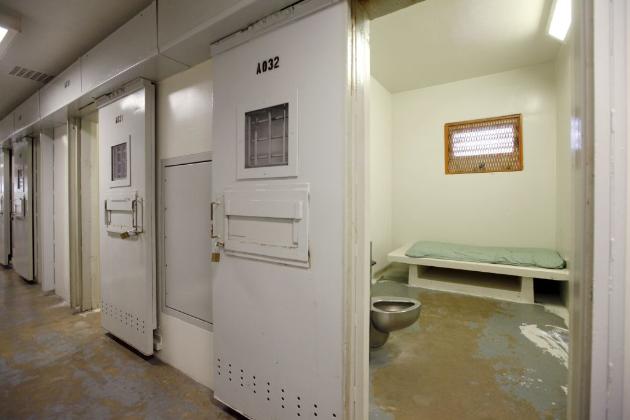
it’s very difficult to get actual photos of solitary cells in various prisons. this is a solitary cell in Unit 32 of the Mississippi State Penitentiary, via the Washington Post
The first group to organize around Tamms, The Committee to End the Marion Lockdown, got started before it was even built, and they were followed a group founded by attorneys Jean Snyder and Jim Chapman, which eventually became the Tamms Committee. The Tamms Committee, alive until 2006, advocated and visited individual prisoners and held meetings to educate family members. In 2008, Tamms Year Ten came along as an organizing campaign that brought together dozens of legislators and some 70 organizations to work for reform legislation. It was an outgrowth of the Tamms Poetry Committee, which had direct lineage from the Committee to End the Marion Lockdown. As noted by the ACLU, “Once the families started meeting together, it became clear that the problem wasn’t the men at Tamms; the problem was that Tamms was torture.”
In 2008, the ten-year anniversary of the supermax’s opening, Tamms Year Ten launched a legislative and media campaign. By that time, one-third of Tamms’ current inmates had been in isolation for the entire decade. It took only 12 months of dedicated, intense organizing, the introduction of legislation and numerous meetings to get to Governor Quinn saying that, “It is a problem that I take seriously.” He introduced a new IDOC director and tasked him with the review and evaluation of the Tamms Supermax, and in September 2009, he presented his reform plan. It included “any allegation of inhumane treatment at Tamms will be investigated.” Tamms Year Ten has been lobbying in Springfield for five years as well as holding work meetings, exhibitions, protests, actions, lobby days and holiday card mailings.
The “I AM A MAN” signs employed by Tamms Year Ten were inspired by the Civil Rights Movement — they were first used in 1968 by the sanitation workers in Memphis Martin Luther King Jr. was supporting when he was killed. Tamms Year Ten added “I AM A MOM” signs and used them at rallies, hearings, and a march protesting AFSCME on April 4th, the anniversary of MLK’s death. Photographs featuring portraits of formerly incarcerated were delivered to legislators and displayed in the Illinois statehouse during final budget negotiations.
The Uptown People’s Law Center litigated a class action to aid Tamms prisoners and on July 20, 2010, the District Court revealed its opinion: every prisoner who’d been transferred to Tamms had been denied a hearing and due process and therefore all must be given not only a hearing, but also a written explanation of why they’d been sent to Tamms at all. As hearings proceeded, more inmates were transferred out. In February 2012, Governor Patrick Quinn announced a budget plan that included closing the Tamms Correctional Center, and on January 4th, 2013, the facility closed its doors for good. The governor wants the money saved from closing Tamms to go towards child protective services, and 270 of their 300 employees have accepted other positions within the Department of Corrections or other state agencies. The remaining 30 employees are pursuing different lines of work.
The Uptown People’s Law Center proudly announced last week:
“Tamms officially closes its doors today, first and foremost because the men sent there did not disappear. Rather than buckle under the extreme psychological pressure of solitary confinement, they banded together, fought back, and reached out and educated and organized their families and friends.”
The lawmakers who fought for this were motivated by moral issues, but there’s been media focus on the financial benefits, too. From the ACLU National Prison Project:
Closing Tamms also means that state lawmakers are beginning to recognize that the exorbitant costs associated with “supermax” facilities are an unjustifiable drain on public resources. According to the Illinois Department of Corrections, “[o]ne of the reasons Tamms was chosen for closure is because it is by far the most expensive facility to operate” – indeed, closing Tamms will mean millions of dollars in savings for the state and its taxpayers. Data shows that Tamms was the least cost-effective of all Illinois’ facilities. Research from around the country tells the same story as in Illinois: solitary confinement is the most expensive form of incarceration and it neither deters violent behavior in prisons nor prevents recidivism.

Protest of AFSCME held by Tamms Year Ten on August 9, 2012. photo by Gretchen Hasse via Tamms Year Ten Facebook
It’s a significant victory and hopefully a hint of things to come. The ACLU says that the call for change is gaining traction nationwide due to “growing budget deficits, costly litigation arising from unconstitutional treatment, and the public’s objection to inhumane conditions.” They cite several other recent achievements, highlighting the following:
- The Maine Department of Corrections cut its “supermax” population by over fifty percent and provided prisoners expanded access to programming and social stimulation.
- Over the last few years, Mississippi reduced the “supermax” population of one institution from 1000 to 150 and eventually closed the entire unit.
- In the last year, Colorado reduced the number of prisoners in solitary confinement by 36.9% and recently announced the closure of a 316-bed “supermax” facility, which is projected to save the state $4.5 million in Fiscal Year 2012-13 and $13.6 million in Fiscal Year 2013-14.
It’s been a huge year for this particular cause, actually.
In April 2012, Amnesty International issued a report expressing its concerns about “cruel isolation” conditions in Arizona’s Maximum Security Prisons. In June, The Supreme Court began its first-ever review of solitary confinement. In October, Human Rights Watch called upon the nation to abolish the use of solitary confinement for offenders under 18. In December, the ACLU in New York City launched a federal lawsuit challenging New York prison official’s system-wide policies and practices governing solitary confinement. This month,Washington announced its intent to re-examine their policies and move away from solitary confinement and California started emptying their solitary confinement cells (perhaps this scathing Amnesty International Report exposing “Severe, Inhumane Solitary Confinement Conditions for 3,000 California Prisoners” had an impact). That’s some progress.
But at a U.N Prisoner’s Rights Meeting in December, the U.S. balked at proposals to limit the amount of time spent in solitary or to ban solitary for kids, pregnant women, and mentally ill persons. This week, it’s officially been 11 years since the first prisoner arrived at Guantánamo and it remains open. I’ve personally found it astounding that over the past few weeks, patriots have clung to an infinitely broad and absolute authority of the Second Amendment while failing to acknowledge our government’s complete disregard for the eighth.

inmate at tamms correctional center (photo by the chicago tribune)
What happens next remains to be seen. In the past year alone the solitary confinement issue has garnered unprecedented press attention. Mother Jones‘ article “Solitary in Iran Nearly Broke Me. Then I Went Inside America’s Prisons” was a wildly popular must-read from December, and other recent press includes The New York Times’ “Prisoner’s Letters Offer a Window Into Lives Spent Alone In Tiny Cells” and “Prisons Rethink Isolation,” The Nation‘s “Unlock The Box“, The Dart Society’s “The Gray Box” and Solitary Watch‘s “Fortress of Solitude.” (2009’s “Hellhole” is also worth a read, and a 2006 NPR series on Life In Solitary Confinement is excellent.)
Julie Rae, the woman wrongfully imprisoned for three years after her son was murdered by a masked invader, shared the following in a testimony submitted to the Senate Judiciary Subcommittee on the Constitution, Civil Rights and Human Rights in June 2012:
“My earnest prayer is that the men and women who assaulted my mind, body and spirit during this time will come to know love, joy and forgiveness in goodness, rather than the pleasure of the sick and twisted activities they chose at the time… it is my deeper prayer that somehow writing this will place a growing desire in the hearts and minds of those who read it, that they can bring health and change to our jails and prisons and courtrooms and will do so.”
The ACLU has a dedicated section on its website with information about advocacy to stop solitary confinement, including research, news and first-person stories from solitary confinement and a petition. You can also check out The Tamms Year Ten and the Uptown People’s Law Center. For more on how spectacularly fucked up the U.S. correctional system is, the Safe Communities: Fair Sentences page is a place to start.


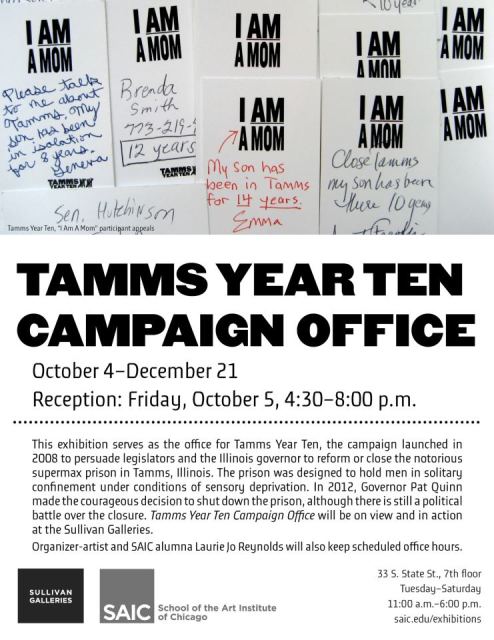


I’m so tired right now but I’m totally committing to reading this article in the morning. I work in the youth justice system and work in youth prisons in England and Wales so very sure I will find this an interesting read. But alas, for now, sweet dreams await.
wow, that is one hell of an insightful and well-written article. thanks so much riese for keeping us all informed and socially conscious! now to read every article and book linked here. looking forward to it :)
This was excellent. It taught me quite a lot. Thank you!
Thank you for this great article. Glad to see that the closure of Tamms, which as you noted, the Law Center has fought since the day it opened in March, 1998, is inspiring others to take on this fight.
I wanted to make two small corrections. The demonstration you pictured captioned “outside of Tamms” is actually outside of the State of Illinois Building in Chicago. They would never allow a demonstration this close to Tamms! Second, the outdoor exercisee cages are actually reserved for the most seriously mentally ill men at Tamms. Everyone else has no real outdoor exercise at all. Their “yard” consists of a gray concrete box, with a small section of the roof open to the sky–but no bars or windows, so you can’t look out and see anything but sky.
But these are quibbles. Congratulations on a great piece.
Alan Mills, Legal Director, Uptown People’s Law Center
Thanks Alan! Sorry about the mistakes, and I’ve fixed them! I’m so glad you liked the piece!
this was to be the last article i read before i got back to studying, but now i have a ton of new tabs open for later. this is obvs my favorite kind of AS article.
Thank you for writing this.
Excellent article.
Riese, this article taught me so much. I had never stopped to think about how horrible this was before. I’m glad to hear Colorado is at least doing something positive by reducing the number of people in solitary confinement but the whole system needs significant readjustment.
wow, i really enjoyed this, 80’000 people in solitary is just a mindboggling number to me. It made me wonder, If you gave a current inmate in solitary confinement a choice, would he/she rather die than remain in solitary for another 25+ years of ‘torture’?
I’ve always been a little on the fence as regards the death penalty, given that we live in a world where miscarriages of justice do happen, it seems a huge risk to take. However when the alternative is sentencing someone to this torture so that at least their bodies are alive ‘just in case’ maybe the death penalty isn’t so inhumane.
I haven’t seen such a survey, but I will note that the suicide rate among men in isolation is off the charts compared to the suicide rate for prisoners in general population. Some of that (and probably most of that) is because solitary causes many men to become seriously mentally ill. However, at least some of those suicides are by people who at least believe that they would be better off dead than spending the rest of their lives in solitary.
What we do know is that men will plead guilty to crimes they did not commit in order to escape solitary. The new documentary, West of Memphis dramatically follows one such case. However, there have been several others.
Alan Mills, Legal Director, Uptown People’s Law Center
There is a Moth Podcast of Damien Echols telling his story. It was released on Sept. 17, is about 12 minutes long, and is both gut-wrenching and riveting.
riese, thanks, this was highly interesting (and horrifying)
it reminded me of jonathan franzen’s essay ‘control units’ in how to be alone, on the prison-industrial complex..fairly sobering read as well
In addition to Franzen’s article (which is great), you should check out the December 6, 2012 issue of Rolling Stone, which describes what it is like to be held in solitary, focusing on a prisoner who now works with us at the Law Center, having survived 12 years at Tamms. Unfortunately, it appears to be behind a pay wall for the moment.
Brilliant article, Riese. I read that Mother Jones article when you included it in one of your TTIRTIL sections and felt viscerally ill from the content. I’m glad you expanded on this topic.
Thanks so much for this eye-opening article. It’s horrifying to be reminded how much evil goes on around us that we are completely ignorant of.
Excellent and insightful piece. I particularly appreciated the point you made regarding the Second Amendment and the government/certain citizens’ disregard for the Eighth. Championing select elements of the Bill of Rights and trying to sweep others under the rug is just ridiculous.
Still trying to get my head around the 80,000. :(
As a fourth year criminology student, this makes my crim nerd heart happy to see here on Autostraddle. Isolation is a completely ineffective method for dealing with mental illness and behaviour issues. But, I am also of the belief that incarceration is a completely ineffective method for dealing with deviance (at least in terms of the criminal justice system’s explicit principles of imprisonment). It does not rehabilitate or deter criminals, it is the most expensive method of addressing deviance, and is inherently racist as Riese pointed out. The out of control use of isolation is not just happening in the U.S. but in Canada as well. One extreme case that is very close to my heart and relevant right now as there’s an inquest going on, is Ashley Smith. The practices and behaviours of Correctional Service of Canada is sickening. http://www.cbc.ca/fifth/2010-2011/behindthewall/timeline.html
Sorry for the novel, I have a lot of feelings on this subject.
Yes Canada is not going good places with our prison system at the moment.
“It is said that no one truly knows a nation until one has been inside its jails. A nation should not be judged by how it treats its highest citizens, but its lowest ones.”
― Nelson Mandela
Thank you for writing this!
The Prison Industrial Complex is such a huge societal ill in this country and no one (well, not nearly enough people) are willing to talk about it.
Thanks for writing this – I remember reading the article about solitary confinement in the Metro (where one of the pictures in this article is from) and being really shocked.
What an incredible piece, Riese. Excellent, excellent work.
That was a shocking read. With the amount of evidence there is to show prison doesn’t reform people, let alone solitary, I cannot believe this practice is so big in America.
Really interesting, although hard to digest this is still happening.
Excellent article! I just wanted to add that trans women prisoners are routinely placed into solitary for their entire sentence as part of supposed “protective custody (which protects them from other inmates but makes them even more vulnerable to rape and harassment by guards).
Got half-way through, will try to finish later. Very well researched and important info, that being said, I find it hard sometimes to muster sympathy for the majority of the criminals in this admittedly awful situation.
Like the protestors in that photo, I also have family in prison. A little over a year ago, my brother tried to rape and kill his ex and her two kids. He plotted this for months. He refused mental health care. He drove 30 hours to carry this out, and committed other crimes along the way to facilitate his mission.
I don’t know how I feel about the death penalty or solitary confinement, but I do know that the only way I would believe that he was truly remorseful was if he killed himself. That would be the only thing that would communicate to me that he felt shame or empathy for what he did to not only them, but myself and my mother. I will say that my views adjusted when it wasn’t just an issue on paper to me.
I too suffer from mental illness, but I make it my responsibility to do what I can to be healthy. I take my meds. I’ve done a lot of therapy, especially after last year. I make responsible choices on who to keep in my life. Mental illness doesn’t generally mean incapable of grasping right from wrong, and premeditated crimes imply the cognitive resources to see other points of view. Some people are just fucking awful.
I do sympathize with the relatives of these prisoners, but I will say this. What little system/culture there is for coping with a loved one in prison puts out the following message:
*If you love them enough they will change
*God is good, and Jesus will help you forgive
*They were framed/it’s just a big misunderstanding/he’s really a nice guy that just made a mistake
*They are still family and you have to love your family
As a lesbian and atheist, I found no solace in these bullshit platitudes. Actions have consequences. So my road to healing was lonely, but ultimately successful, because I based it on things I could trust.
I hope this makes something resembling sense, it’s harder to talk about in writing.
Thank you for this response. While your pain and anger come through loud and clear, you also express willingness to look beyond your personal pain.
I suggest you either watch the on-line documentary (15 minutes), The Gray Box, produced by the Dart Society. Several of the supermax survivors interviewed say straight up, they deserved to be punished for what they did, but no human being deserves to be tortured.
May your healing continue, and you find the peace you deserve.
Its a disgrace that Tamms has shut down. It didn’t shut down becaues it was inhumane it shut down due to lack of funding! I fear for the staff having to deal with these gang bangers. I have read that someone said that violence happens due to the mentality of the prison staff. I have never read so much shit in my life. These men are GANG BANGERS violence is in their nature. Even when a GANG BANGER has no violence on his own record you can be damn sure that he has put hits out on people.
So important to see this issue covered so throughly.
I learned about the extent of the use of solitary confinement in the US when writing a blog post for The Dart Society after the release of the ACLU’s report on the issue last year. I would again like to recommend people read/watch the investigative story by Susan Greene on solitary confinement. In her piece prisoner’s share their own stories of solitary confinement.
From the piece:
“I got my first letter from solitary in 2008 while working as a newspaper columnist in Colorado. Mark Jordan — then at ADX on convictions for bank robbery and a prison murder – wrote asking me to cover a trial in which he’d be arguing for access to reading materials that seemed a reasonable way to cope inside a concrete box. The Federal Bureau of Prisons had banned, for instance, D.H. Lawrence’s Sons and Lovers and Anaïs Nin’s books, which Jordan had already ordered. Officers in the mailroom wouldn’t pass along his issues of The New Yorker, either, because some of the cartoons depict nude figures.
Intrigued, I went to hear Jordan represent himself in federal court by a live video feed from prison. Though he was shackled as he made his case, his arguments were as skilled as those of the most seasoned trial attorneys I had seen. He lost.”
Victoria Law’s book on women’s resistance behind bars looks incredibly interesting too, though I haven’t read it yet.
Excellent article with impressive synthesis of information on this topic.
Quick correction: “In June, The Supreme Court began its first-ever review of solitary confinement.” This was actually the US Senate, not the Supreme Court. I was in attendance at the hearing, but to my knowledge the Supreme Court was never mentioned.
Also, you cited Washington as a state reforming its use of solitary confinement. Just today I published an article on SolitaryWatch.com in which I point out that the article in question was simply incorrect. Washington State claims a solitary confinement population of approximately 400, which would be significant given that that would mean only 2.7% of the states prisoners were in prison (compared to the average range of 3-5%), but I learned from the Washington Department of Corrections that actually there are 430 ADDITIONAL inmates in solitary, doubling the figure in isolation to over 5%. Hardly a reduction. And the inmates I’m in touch with in Washington report little change.
Anyway, thanks for writing this and increasing awareness of this hidden issue.
also this video:
LIVE from the NYPL: Life After Death: DAMIEN ECHOLS in conversation with HENRY ROLLINS
http://www.nypl.org/audiovideo/life-after-death-damien-echols-conversation-henry-rollins
Comparte este artículo sobre Ver películas
On line y iPad con tus contactos en las principales redes sociales con los botones que hallarás
al principio del mismo.
Hello, i feel that i noticed you visited my blog
so i came to return the desire?.I’m attempting to in finding issues to improve my
web site!I suppose its adequate to make use of some of your ideas!!
Everything is very open with a really clear description of the issues.
It was really informative. Your site is very useful.
Thank you for sharing!
Dự án Vinhomes golden river duy nhất hiện nay sở hữu
4 tầm nhìn triệu Đô đắt giá nhất Sài Gòn:
– Một mặt hướng ra sông Sài Gòn khoáng đạt;
– Một mặt hướng ra khu trung tâm sôi động với
điểm nhấn là tòa Bitexco;
– Một mặt hướng ra khu đô thị Vinhomes Central
Park nơi có tòa tháp cao nhất Việt Nam – Landmark 81 – biểu tượng phồn vinh của thời đại mới.
– Một mặt hướng ra không gian công viên cây xanh của Thảo Cầm Viên Sài Gòn.
Tầm nhìn đáng giá triệu đô này sẽ
mang lại giá trị gia tăng lớn cho dự án trong nhiều năm tiếp theo…